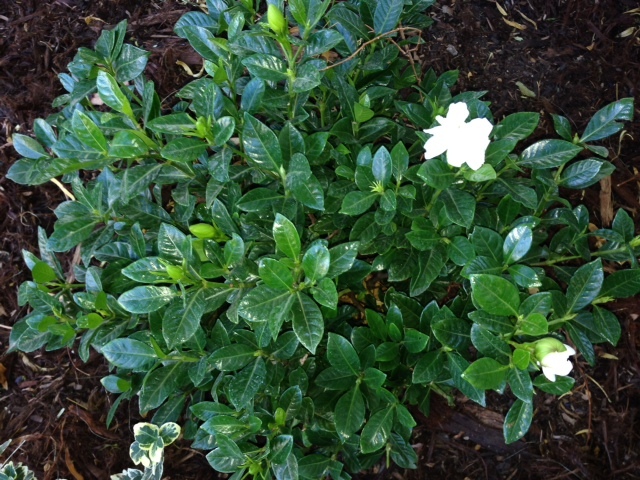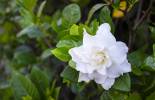Phosphorus in backfill soil mix promotes root development

Q: How long after planting Mexican fan palms should you wait before feeding? I’ve heard that feeding too soon could stress palms. Is steer manure any good?
A: Give them about two or three months to get established during warm weather before feeding them with a fertilizer high in nitrogen. You won’t hurt anything, but they don’t have the roots to take it up, and it wastes a lot of fertilizer. Give the palm a chance to establish roots and then feed it.
By the way, avoid transplanting or planting palms in the fall. This is the absolute worst time to establish palm trees. This timing is different from other trees and shrubs. With most trees and shrubs, fall weather is an ideal time to establish them if they are not sensitive to freezing temperatures.
Architects and landscapers like to specify sand for the backfill around palm trees. I cannot disagree more. This recommendation got started years ago and, in my opinion, has no basis in science.
When backfilling around palm trees, use the same backfill you would around other trees and shrubs. Make sure the backfill soil mix is high in phosphorus to promote root development. I always throw some triple super phosphate in the backfill mix to make sure.
It’s extremely important to make sure the soil around the roots drains water freely. This was the major reason for recommending sand as the backfill soil mix I mentioned earlier. If you use sand, add about 50 percent compost to the sand by volume. Most good composts are naturally high in phosphorus.
Palms grow great with manure or compost mixed in the backfill. Some manures are high in salts so just be careful on how much you add. You should have no problem with a 50/50 mix by volume as long as the soil stays moist.
Q: I salvaged some trees my neighbor was taking to the dump. I placed each plant in a large hole and put mulch around them and then topped the mulch off with soil. How much water do they now need after planting? They were out of the ground for several days before they were replanted.
A: It is difficult to say or even if they will survive. It depends on the amount of roots that were pulled out compared to what remained in the ground. It also depends on how long the roots were exposed to open air. Regardless, keep the soil moist but not soggy.
Plants up to about 3 years of age can normally be transplanted to another location by hand without much difficulty. When plants are older than 3 years, they do not transplant as easily unless they have been drip irrigated near the trunk or root pruned.
Transplanting plants older than this by hand can be done, but you need to know what you’re doing. It is important they are taken from the ground with care. It doesn’t sound like this happened in your case.
It is always best to prune or cut the roots with a shovel, called root pruning, one season prior to transplanting. I realize you did not have the opportunity to do this.
Immediately before or after transplanting, reduce the top of a plant by one-third. The best way to make the top smaller is to remove entire limbs rather than giving it a “haircut.” Once limbs are removed, shorten existing limbs. It is less stressful for a plant to take water to leaves closest to the roots.
When trees and shrubs are removed from the ground without much care, most of the roots stay in the ground. Chance of these plants surviving the first season are small even if done in the fall, the best time of year to transplant. Make sure these plants are staked so the roots don’t move.
That being said, water them thoroughly but do not keep the soil soggy. Put a well or moat around them about 4 inches tall and fill this moat about twice a week, three times a week in the middle of summer. You will know if they are going to make it or not when the weather gets hot.
Q: I bought a gardenia plant a few months ago. It looks robust with green shiny leaves. I placed the pot on the east side in front of my house so it gets sunlight in the morning but shade in the afternoon. I water it in the container every day. The problem is during the summer. The buds, before it blooms, wilt and fall off.
A: The usual reason for flower buds dropping from gardenias is dry soil. Gardenias are very touchy about soil moisture levels. Another possibility would be salt accumulation in the soil from our tap water.
Even though you water daily, perhaps the soil is not remaining wet enough by midafternoon. The other possibility might be the volume of water applied. Apply enough water so that at least 20 percent of the applied water comes out of drainage holes at the bottom of the container.
Schedule irrigations so that water is applied to the container before it starts to get hot during the summer. You might need a second application of water around 1 p.m. during the summer months if the soil in the container does not hold enough water.
Our tap water in Las Vegas carries about 1 ton of salt in each 300,000 gallons. The salt levels are quite high for drinking water. For some houseplants, it is too high and must be diluted at least half with distilled or reverse osmosis water.
The volume of water for irrigating plants using tap water should be enough to continuously flush salts from container soils. This requires over-irrigating about 20 percent. If not enough water is applied to flush the salts, these levels will continue to build over time and damage plants.
Q: What’s the best way to fertilize plants on a drip system? Fertilizer injectors are expensive to install and maintain. I put fertilizer stakes under emitters that irrigate trees, but shrubs are more difficult. My emitters are covered by mulch, and I don’t know where they are.
A: The options when fertilizing plants in the landscape are to inject fertilizers into the irrigation water, apply dry or liquid fertilizers to the top of the soil and water them in, or spray the leaves of plants with a liquid fertilizer solution.
There are fertilizer injectors that are not too expensive and do not need to be installed in the ground. They are attached to irrigation lines and the fertilizer injected into the water. After the fertilizer is applied, they are removed and stored until the next application.
Fertilizer tanks and the fertilizer injector can be installed below ground, but they are expensive up front, expensive to install, expensive to use and difficult to maintain. After a few years of use, many are not used anymore.
Spread dry fertilizers on the soil surface or on top of rock or wood mulch. Use a hose and hose-end sprayer to wash the fertilizer through the mulch to the soil surface. I have found one or two flushes of water to be enough to wash the fertilizer onto the surface of the soil. Water from drip emitters dissolves the fertilizer and moves it from the soil surface to the roots.
Apply liquid fertilizers to the top of the soil or spray it on leaf surfaces. Concentrated liquid fertilizers can be applied to the soil, but much weaker fertilizer solutions are applied to the leaves and done more often. Concentrated liquid fertilizers applied to the soil are done once or twice a year. Liquid fertilizer solutions applied to the leaves are done as often as every eight weeks.
Bob Morris is a horticulture expert living in Las Vegas and professor emeritus for the University of Nevada. Visit his blog at xtremehorticulture.blogspot.com. Send questions to Extremehort@aol.com.


















